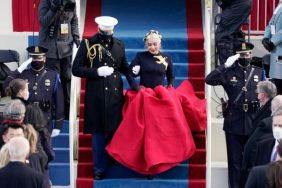“The only thing that separates us from the animals is our ability to accessorize,” Clairee Belcher observes in the 1989 film Steel Magnolias, fully cognizant that our desire to express our sartorial side is a distinctly human trait. For as long as there has been a need to wear clothing, fashion has emerged for one of the most fundamental aspects of selfhood is the image one presents to the world.
Also: The Best Fashion Photography of the Last 20 Years
Being highly functional and somewhat disposable, fashion has not always been seen as worthy of study or preservation outside of its niche; it’s here –today-gone-tomorrow quality has rendered it inconsequential in the minds of many. At the same time, it only continues to grow as a powerhouse of industry and culture around the globe and is now being properly recognized as a driving force in human affairs dating back to ancient times with the advent of the Silk Road.

To bring these fascinating chapters of history to life, Google introduces “We Wear Culture: The Stories Behind What We Wear,” an online site that showcases more than 30,000 objects of fashion from around the globe made over the past 3,000 years. The site brings together more than 180 partner companies and institutions from 42 countries, including the Costume Institute at The Metropolitan Museum of Art, Conde Nast Archive, Agatha Ruiz de la Prada Foundation, Gordon Parks Foundation, the Bolshoi Theatre, and Central Saint Martins, among many more.
“We Wear Culture” is a wonderland of the most magical kind, a trip down the rabbit hole and into a treasure of art, fashion, and design. The site feature more than 450 curated exhibitions, four virtual reality experiences, and six Google expeditions that will keep you coming back for more, introducing you to classic histories from Coco Chanel’s little black dress and the stilettos Salvatore Ferragamo made exclusively for Marilyn Monroe to international adventures from Bollywood fashion to the art of making a kimono.

The site came about in 2010 as the fruits of Google’s “20 percent time” initiative, (which encourages employees to spend one fifth of their work hours devoted to a personal project), when engineer Amit Sood began digitizing cultural artifacts from the world’s leading museums. This lead to the creation of the Google Cultural Institute, dedicated to creating a digital hub for some 1,300 institutions.
With an eye towards what was trending, the Institute realized that fashion was a top-ranking subject in online searches and they focused heir energies to cater to this, wisely partnering with places like the Victoria and Albert Museum, London, which has one of the greatest fashion collections in the world. The V&A has curated online exhibitions including a 360° film that examines the corset’s place within fashion history and discusses its design, dating back to the paintings of French artist François Boucher and driving forward to a 1990 corset from Vivienne Westwood.

Taken as a whole, “We Wear Culture” is as much a study of sartorial style as it is of political and economic power, the rigidity and fluidity of gender roles, the dynamic between tradition and innovation, and the human compulsion to transform and remake the physical world. It is a story of illusion and expression, creativity and commerce, and cross-cultural exchange that makes you realize as distinctive as we are as people, we share the deeply primal human trait: to present ourselves as works of art.
All images: From “We Wear Culture: The Stories Behind What We Wear.”
Miss Rosen is a journalist covering art, photography, culture, and books. Her byline has appeared in L’Uomo Vogue, Vogue Online, The Undefeated, Dazed Digital, Aperture Online, and Feature Shoot. Follow her on Twitter @Miss_Rosen.






